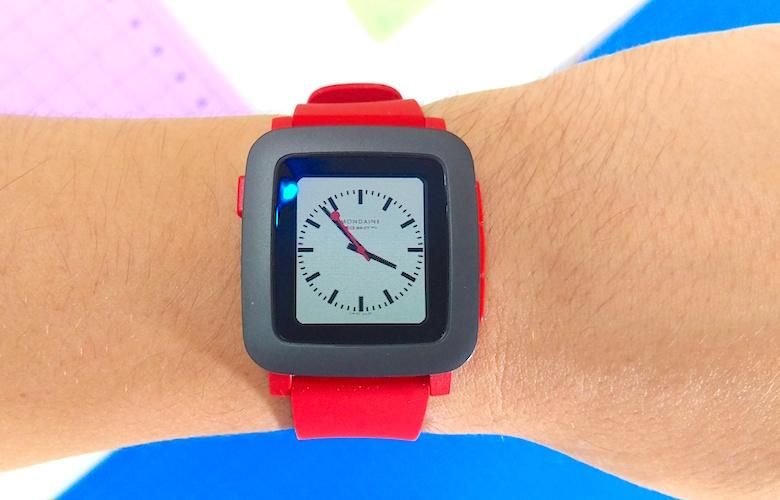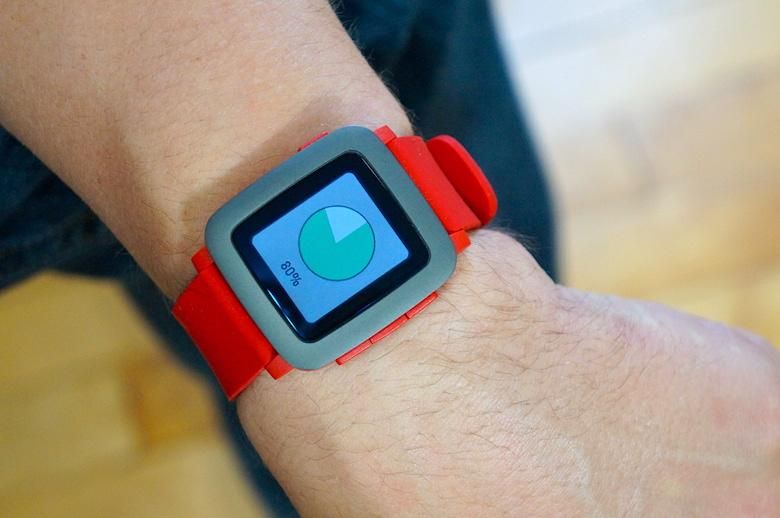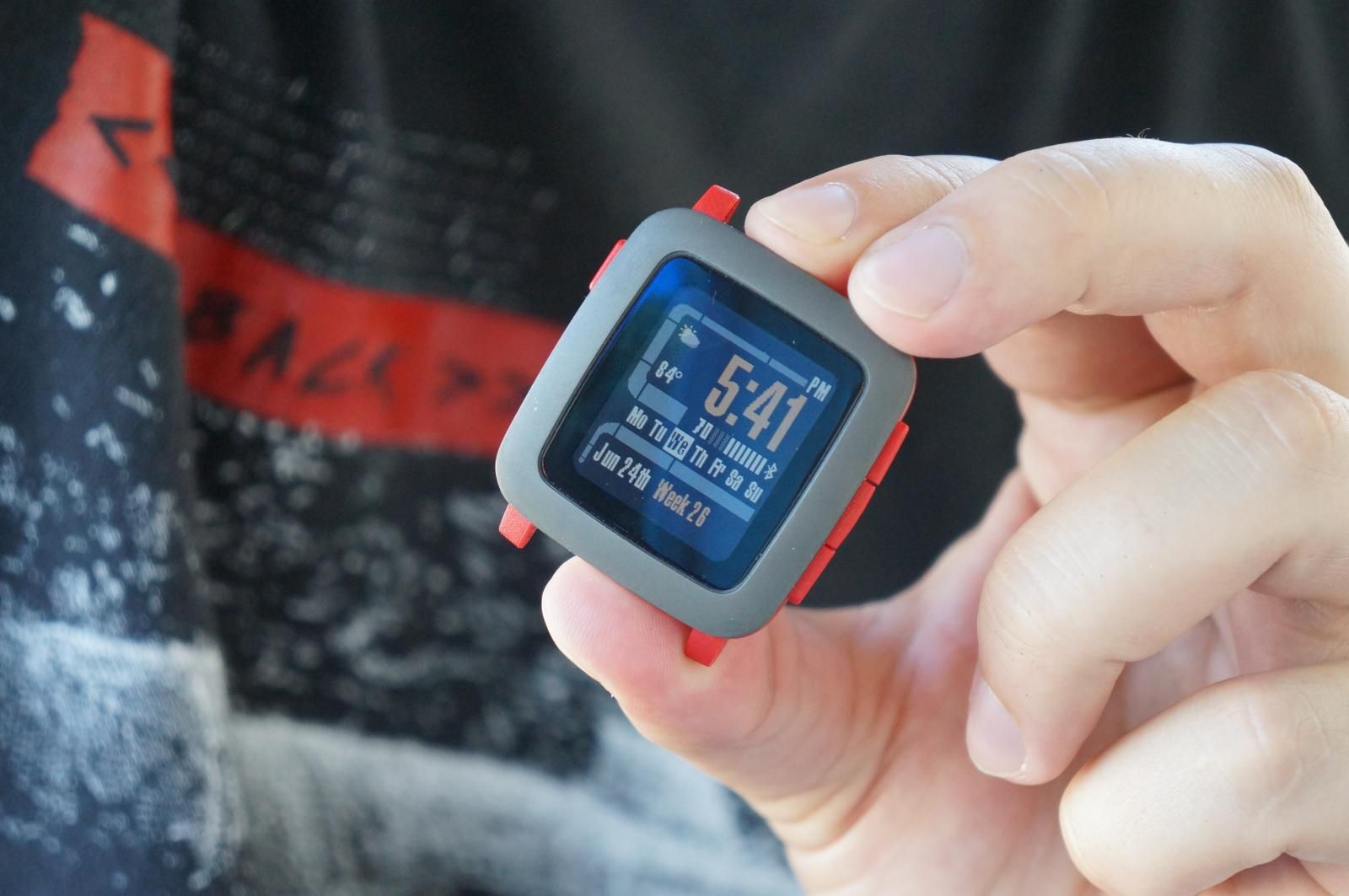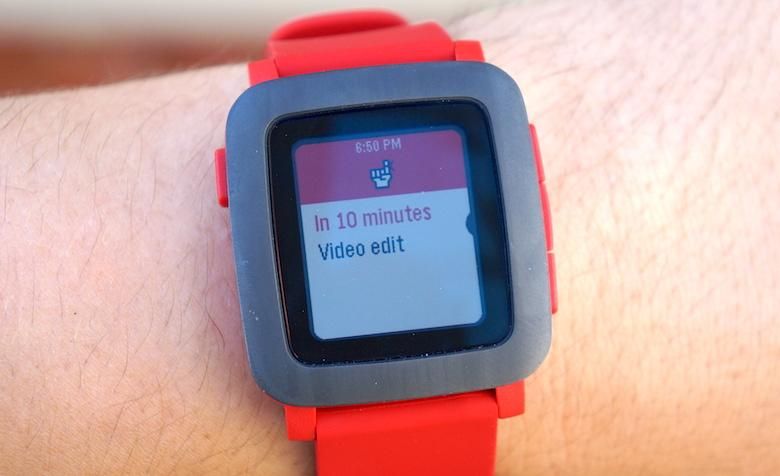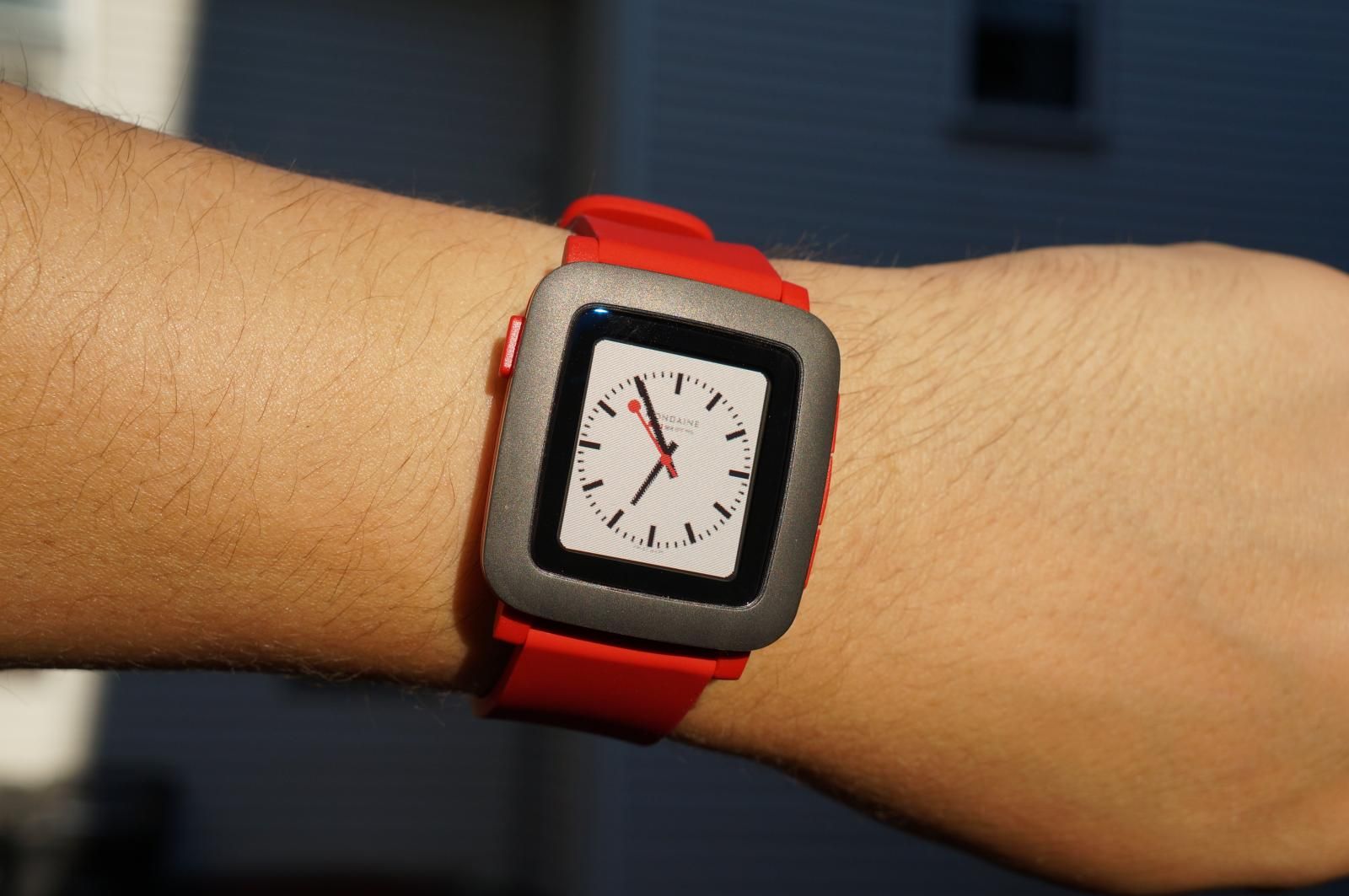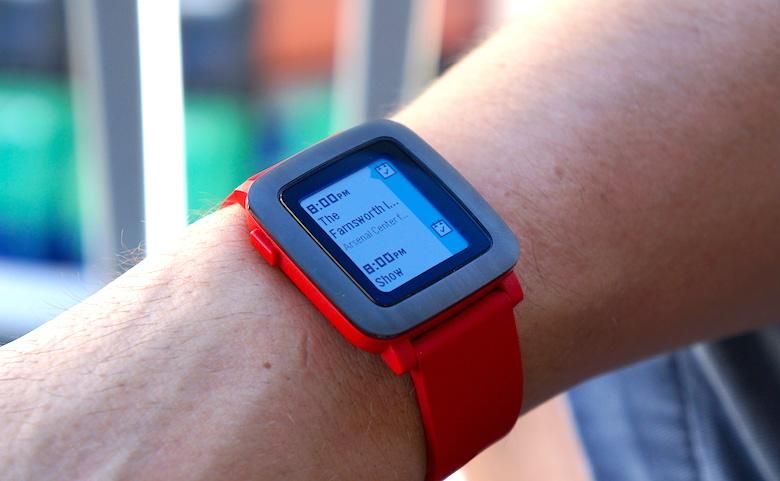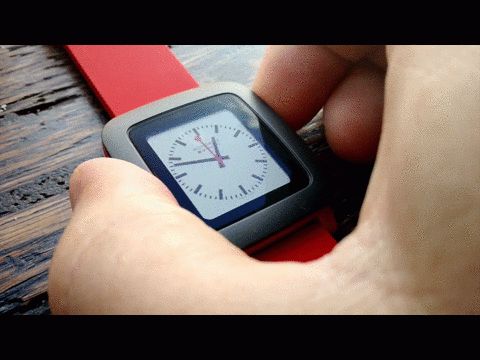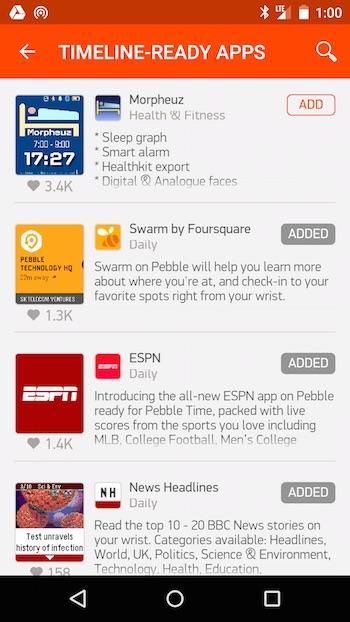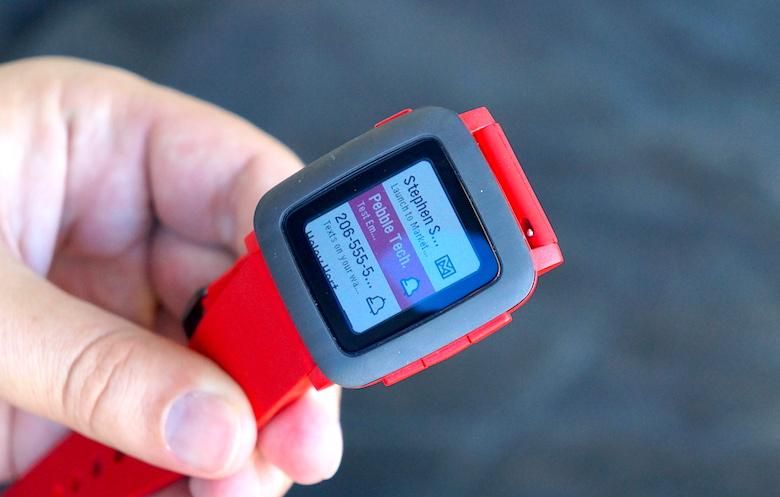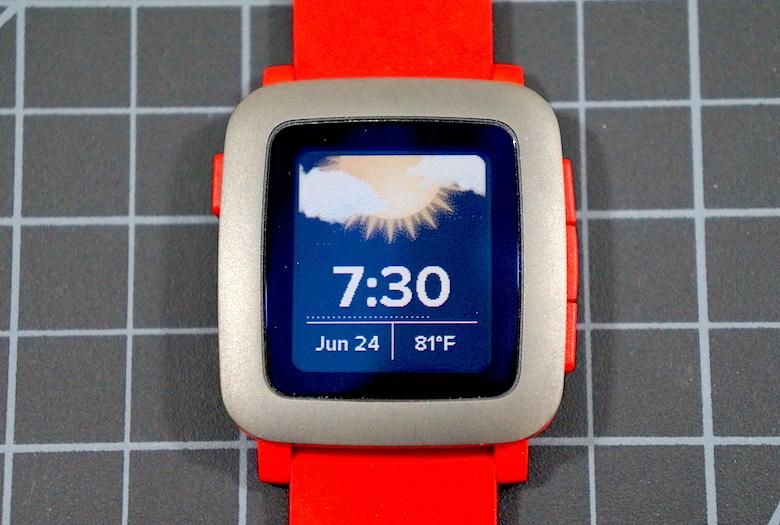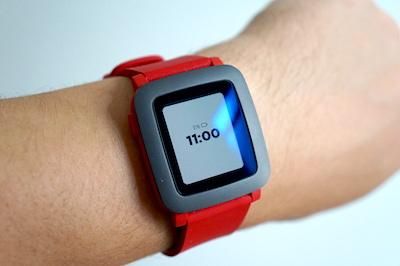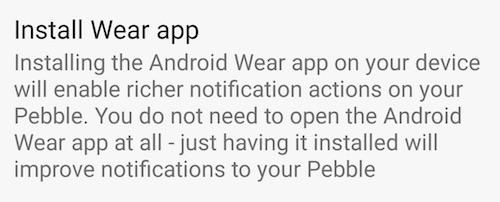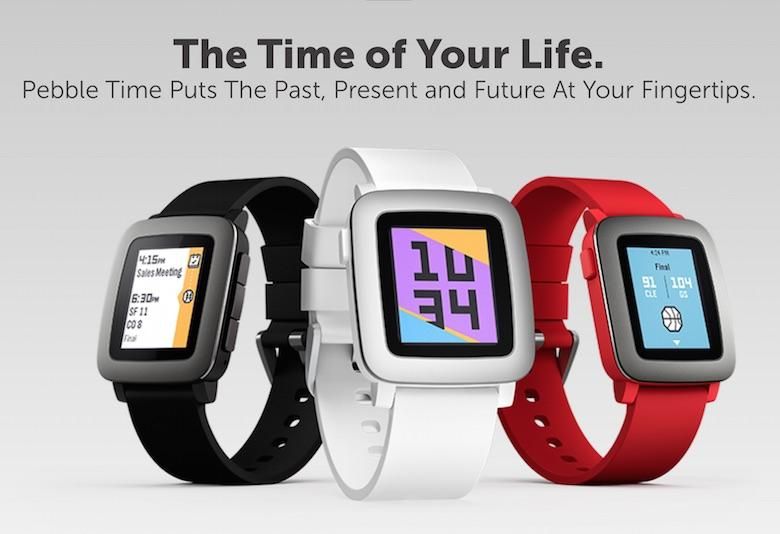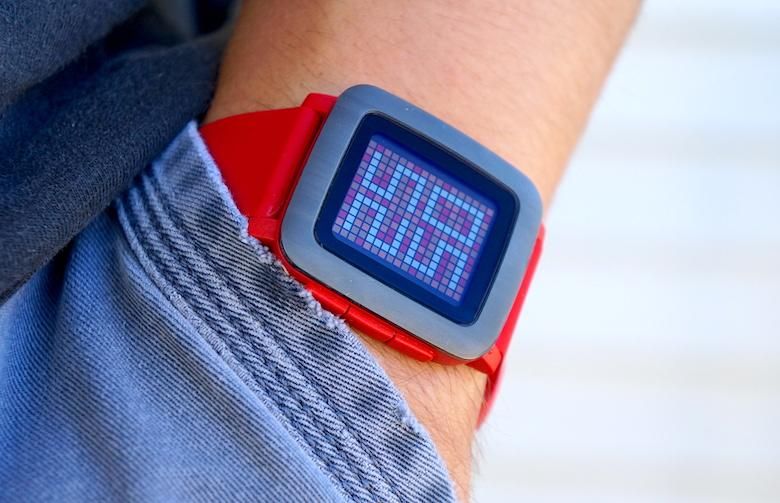It was over two years ago that we gave you a taste of life on the very first Pebble – the product that smashed crowdfunding records and almost singlehandedly launched the modern smartwatch era. The little Bluetooth wearable would go on to sell over a million units in both standard and Steel trims, and when the sequel Pebble Time hit Kickstarter this past March, it broke another record by being the first Kickstarter project in history to raise a million dollars … in 49 minutes. Clearly, the people at Pebble know a little something about getting the masses excited for a new gadget.
But time flies in the tech space, where two years may as well be two decades in a brand-new segment like wearables. While the original Pebble launched in a relative vacuum, Pebble Time now finds itself amid stiff competition from some pretty big rivals. Does Pebble bring the heat it needs to prosper –or even survive– under the pressure? And should you consider strapping a Pebble Time to your wrist? To find out, we’ve spent ten days with a Kickstarter-Edition Pebble Time bonded to a Moto X and a Samsung Galaxy S6 Active, and the answers await below in Pocketnow’s Pebble Time review!
Editor’s Note: While Pebble Time is also compatible with the iPhone, we don’t cover that angle in this review. For info on the iPhone-centric Pebble Time experience, check out our supplementary feature here.
Pebble Time review video
Hardware
Pebble has always had a unique look, and Pebble Time is no exception. Instead of continuing in the vein of the aggressively angular Pebble Steel, it takes a different tack: Pebble Time features a slim (9.5mm) casing defined by matte plastics, big side buttons, and a huge marine-grade stainless steel bezel. It’s this latter bit that gives us the most pause concerning the design: on the one hand, its round corners give Pebble Time a very friendly, inviting look – and in a clever feat of engineering, it also doubles as the watch’s Bluetooth antenna. But the nested bezels (yep, there are two separate display borders here) also give Pebble Time a very low screen-to-body ratio that makes it seem quite antiquated, like an old television set. Factor in the red color of our review device, and this watch gives off an almost juvenile vibe that belies its grown-up price tag. Adding practical concerns to aesthetic ones, the bezel’s PVD coating scratches very easily, too.
Get past that, and Pebble Time’s hardware has a lot going for it. Black and white casing options are available for the less-flashy, and while the stock silicone band is soft, stretchy and very comfortable, it’s a trivial matter to swap it out for a different one thanks to its built-in quick-release tabs. In direct opposition to the Apple Watch’s incredibly pricey proprietary bands, Pebble Time retains the standard 22mm mounting brackets of the original Pebble, so you can find a strap you like at a price that works for you. Better yet: Pebble has factored expandability into Pebble Time’s design with support for “smartstraps,” intelligent bands that will connect to the watch’s charging/data port to add features not included in the out-of-box hardware (think NFC or GPS, or if you really want to shoot for the stars, maybe a heart rate sensor or wireless charging coil). Pebble Time is also shower- and swim-friendly with 30-meter water resistance under the ISO 22810 standard, its Gorilla Glass display protection is pretty tough, and at 42g, the watch is so lightweight you might forget you’re wearing it – until you get a message, anyway.
You’ll read those messages –not to mention the time– on a 1.25-inch display that finally brings Pebble into the world of color
screens. A word of warning: it’s probably not the kind of color you’re used to seeing if you’ve read our other wearable
reviews. Owing to its e-paper technology, Pebble Time’s 64-color screen is a muted, pastel-shaded affair, lit by a very dim LED backlight that only comes on for a few seconds on a button press (or with a firm shake of the wrist). Unlike the monochrome panel on earlier Pebbles, it doesn’t always offer enough contrast, and at 148×172 pixels (182ppi) it’s not the sharpest screen out there either; the comparably-priced ASUS ZenWatch offers a pixel density of 278 ppi, while the Apple Watch kicks out 325 ppi. Pebble Time’s screen is also sunk a considerable distance below the watch’s 2.5D cover glass, adding to its old-timey feel.
But Pebble chose this display over a more typical AMOLED or LCD for some very practical reasons. Chief among these is image persistence: unlike most other smartwatches, Pebble Time’s display is always on, so you don’t need to push a button or jiggle your wrist just to see the time. Also, its refresh rate is top-notch, with none of the “ghosting” you might associate with other electrophoretic displays on the market. Given the right watchface, it’s plenty visible in direct sunlight. And because the display only uses energy when it changes state, it’s incredibly power efficient: according to a typical power budget, the screen only accounts for 4% of Pebble Time’s estimated power drain per charge.
Software
If Pebble Time’s hardware falls a little short of stellar, its software makes up the difference. Version 3.0 of the Pebble OS brings an entirely new interface based around something called the “Timeline,” a very smart feature that makes the Pebble less notification drone, more personal assistant. Pressing Pebble Time’s up or down buttons will summon Timeline right from the watchface, with down displaying the future and up recalling the past. The more you click, the farther you go in either direction. And it’s more than just calendar appointments: depending on which apps you have installed, you’ll be able to see sports scores, news headlines, missed calls and more, using fewer clicks than you would otherwise. The idea is simple but alluring; the more apps are made compatible with Pebble Time, the more useful the Timeline will be, and the less often users will need to dive into the app launcher to get information.
Speaking of developers, there are lots of them. As of presstime, Pebble claimed over 8000 apps in its app store, roughly double what Android Wear and the Apple Watch offered as of May 2015. These range from obvious titles like stopwatches and weather trackers to simple Flappy Bird clones to niche utilities like tide clocks for specific harbors around the world. Apps are downloaded and installed through the Pebble Time companion app on the phone side and then pushed via Bluetooth to the watch. The same method allows for the installation of custom watch faces: there are thousands available in almost every style you can think of, and you can even make your own design pretty easily.
Apps and watchfaces alike are accessed by pressing Pebble Time’s center button to open the vertically-scrolling menu (returning to the watchface is as simple as pressing the left-side “back” button). You can install a mix of about 50 apps and/or watchfaces to Pebble Time’s internal storage, with additional apps or faces residing on the phone and transferring to the watch on demand. Because filling the app list with anywhere near that number of titles would result in some pretty tedious scrolling, Pebble Time also allows you to use a long-press of the up or down buttons to launch specific apps.
Regardless of which apps you’re using, most interface actions are accompanied by transition animations between screens: muting an app’s notifications will show an ostrich sticking its head in the sand, for example, while deleting a calendar appointment will send a sheet of paper through a shredder. While they’re a little on the cutesy side, they’re also zippy enough that they don’t slow down the interactions much, and you can skip them with a button press if you really can’t spare the additional second. For our part, we think they do a good job of completing Pebble’s unique charm. No other smartwatch has this fun, bubbly personality; it’s really kind of nice.
Pebble started out two years ago as a very simple notification device, and it still performs that core function quite well. Texts, calls, event reminders, emails – any alert you’ve opted into will buzz your wrist with a strong vibration. It’s not as elegant as the gentle tap of the Apple Watch, but it’ll certainly get your attention. If the notification doesn’t require a reply, you can read the whole thing right on your watch and move on with your day. Or you can reply with a canned response: the Pebble Time app allows you to type up to five predefined messages on your phone which can then be selected and sent from the watch as needed. Thanks to Pebble Time’s new built-in microphone, you can also reply to a notification by voice, which the watch will then transcribe into text and send. It works about as well as it does on Android Wear, with the added bonus that the Pebble will actually let you finish your sentences.
While the debate continues to rage about the utility of the smartwatch in general (check the comments section on any smartwatch story ever), I made up my mind on this issue after a week with the original Pebble in 2012: life on a smartwatch is awesome. Specific examples of the utility of a second screen on your wrist are manifold, from driving to washing dishes to remotely controlling music and beyond … but to be honest, you really can’t understand how useful it is until you’ve tried it yourself. A smartwatch completely changes the way you use your smartphone – mainly by letting you leave your smartphone in your pocket much more often.
Test Notes
One of the common complaints about the smartwatch in general is the hassle of having “something else to keep charged,” and that makes some sense. A convenience accessory that needs to be charged every night isn’t quite so convenient, after all. Fortunately the sacrifices Pebble has made in the display and feature load here haven’t been in vain: Pebble Time is one of the longest-lasting smartwatches we’ve tested. The company promises one week of uptime between charges in its marketing materials – and a week is exactly how long our review device lasts per single charge of its tiny 150 mAh battery. That’s quite a feat considering how many notifications we field on a daily basis. Better yet: even when the battery ticked down to 0% on the seventh day of our test period and all the smart features shut down, it continued telling the time for eight hours after it should have died (it might have lasted longer still, but we needed to recharge it to continue the review process). And when we finally plugged it in, it only took the Pebble Time an hour to charge back up to 100%, after which it was set for another whole week. That’s battery life the Apple Watch and Android Wear devices can only dream of, so it’s easier to forgive Pebble’s finicky, too-sensitive magnetic charging cable that frequently disconnects if you so much as move the watch while it’s charging. It’s a shame Pebble hasn’t managed to correct this long-standing problem – and it makes us wonder about the resiliency of the smartstraps which will use the same connection.
Pebble Time is a little “hacky” in some respects. Some apps, for example, won’t work without “companion apps” installed on the phone, making for a more complicated two-step install process (and providing an opportunity for some developers to mask paid phone apps with their “free” watch versions). For voice recognition and rich notifications to work, you need to install the Android Wear app on Android so Pebble can leverage its architecture – understandable, but weird nevertheless. And some actions like controlling media take more steps on Pebble and work with a narrower range of apps than Android Wear. Controlling the podcast-streaming app Stitcher with Android Wear, for example, is a simple matter of swiping the card into view on the watch and pressing play/pause. Accomplishing the same feat with Pebble requires installing a $2.99 app called “Music Boss.” Also, I get turn-by-turn directions on my wrist when I’m driving somewhere while wearing my Moto 360; not so on Pebble Time.
To Pebble’s credit, it tends to embrace its limitations, rather than sweeping them under the rug. Its marketing material is littered with retro-style, 8-bit design that gleefully calls out the watch’s low-res display and interface graphics and reminds us that Pebble is much more indie-geek accessory than fashionista bling. The apps and watchfaces that work the best with Pebble Time are the ones which understand and take advantage of this.
Further, Pebble’s motivated and passionate developer base remains something to be admired. Pebble’s dev list includes big names like If This Then That, GoPro, Yelp, Evernote and ESPN, among others. Then there are the fitness titles that tie into the Pebble’s motion sensors, like FitCat and Sleep as Android. With the right apps installed, you can use Pebble to call for an Uber, control your home’s Nest thermostat, remotely trigger your phone’s camera, find out when the next bus to town is, or scan your Starbucks card for your morning coffee – all without ever touching your smartphone. That’s pretty cool.
Pricing and Availability
Pebble Time is currently available for preorder at Best Buy for $199.99, with free shipping to buyers in the US. Orders will begin shipping July 20th, with availability in retail and other channels to be announced at a later date.
The brawnier, shinier (and more expensive) Pebble Time Steel will also begin shipping in July. We got in on an early Kickstarter wave for that one at the $265 level, so we’ll follow up with coverage of Pebble Time Steel when it lands on our doorstep.
Conclusion
So far, Pebble’s head start in the market and its savvy marketing have kept the company growing even in the face of some fierce competition. Pebble’s fanbase, plus the dollars of underdog-loving contrarians, will all but ensure the economic success of Pebble Time and Pebble Time Steel (if they haven’t already). And even if it suffers from growing competitive pressure in the Android Wear world, Pebble Time is likely to carve out space for itself on iPhone owners’ wrists as a much cheaper –and simpler– alternative to the pricey Apple Watch.
But Pebble can’t afford to rest on its laurels. For all its innovation, I can’t help but regard Pebble Time as less impressive than much of the competition, especially in terms of fit/finish and display technology. The result is a product that doesn’t really feel like it earns its nearly-$200 price tag. In the world of wearables, fashion counts – and for even less money, you can get a nicer-looking watch from Google (whose ecosystem is growing at a much faster rate). Also available for $50 less: the original Pebble Steel, whose aesthetics I tend to prefer.
The upshot: the Pebble Time is a solid, simple smartwatch with some great ideas driving it – and if you do buy one you’ll probably grow to love it just as much as I loved its predecessor. But in some ways it seems as though Pebble is already struggling to keep up with the new wearable world it helped create. While Pebble Time will do the job for now, we’re hopeful for something a little grander from Pebble on the next go-round.

